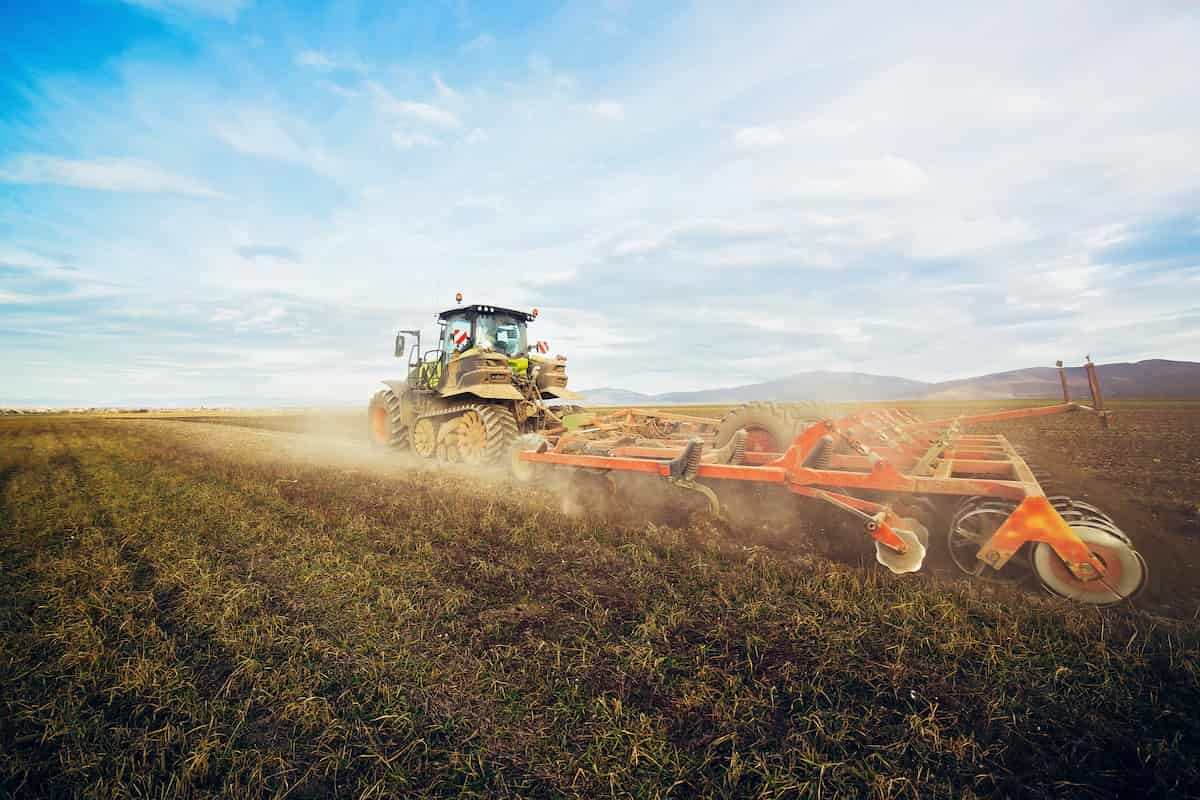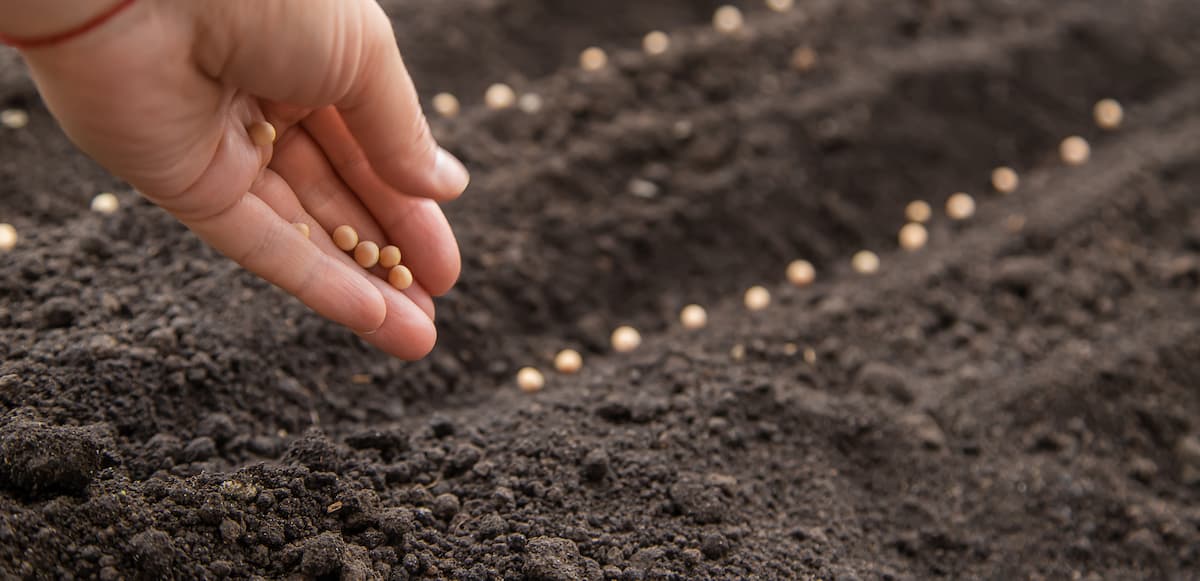Lentil, or Masur and Malka, is a highly valued human food mainly consumed as dry seeds in various forms. In India, it is commonly consumed as ‘Dal’ after removing the outer skin and separating cotyledons. Lentil is also an important cattle feed, with its dry leaves, stems, and broken pods used as feed. The lentil is believed to be one of the first crops grown over 8,500 years ago. While the majority of lentil production in the U.S. and Canada is exported, domestic consumption is on the rise.

Lentil Production Guide
Best Package and Practices of Lentil High Production
To achieve high lentil production, optimal planting time is crucial, with sowing during October-November recommended in most areas. Seeds should be treated with Trichoderma viride or Rhizobium culture before sowing. Adequate moisture supply during the growing period is important, and irrigation should be provided during dry spells.
Proper weed control and applying nitrogen and phosphorus fertilizers can also enhance production. Harvesting should be done when the plants are fully mature but before pods shatter, and the crop should be properly dried and stored to prevent spoilage.
Land/ Field Preparation and Soil Requirements for Lentil
The best soil for lentil cultivation is well-drained, loamy soil with a neutral pH. Acidic soils are unsuitable for lentil cultivation, and the soil should be weed-free and friable to ensure uniform seeding depth. Heavy soils require one deep plowing followed by two to three cross-harrowing and leveling to ease irrigation. Lentil is a pulse crop that can be grown in almost all soil types, except saline, alkaline or waterlogged soils, with the best pH level of around 7.
In case you missed it: Oats Production Guide: A Step-By-Step Cultivation Practices

Temperature, Climatic, and Rainfall Requirements for Lentil
Lentil is a hardy crop that can withstand frost and severe winters. It requires cold temperatures during vegetative growth and warm temperatures during maturity. The ideal temperature range for growth is 18-30°C. Lentils can be grown at high altitudes, with a range extending up to 3,500 meters in the northwest hills and nearly 25 to 50cm of rainfall
Propagation Method and Seed Quality for Lentil
farmers should ensure high seed quality and select appropriate propagation methods. Good seed quality includes genetic purity and high germination rates, while appropriate propagation methods include direct seeding or transplanting, depending on soil and climate conditions
Seed Treatment for Lentil
Use either a combination of Thirum (2 gm) and Carbendazim (1 gm) or a single application of Thirum at 3 gm or Carbendazim at 2.5 g per Kg of seed as a fungicide. For insect control, Chlorpyriphos 20 E.C. at 8 ml/Kg of seed can be used. Additionally, farmers can apply one packet each of Rhizobium and PSB culture for every 10 kg of seed to enhance soil fertility and plant growth.
Seed Rate and Spacing for Lentil
The recommended seed rates for lentil cultivation vary based on seed size, sowing time, and cropping system. 40-45 kg/ha is recommended for small-seeded varieties, while bold-seeded varieties require 45-60 kg/ha. For late sowing conditions, 50-60 kg/ha is recommended, and 60-80 kg/ha is recommended for ultra cropping. Sowing should be done in rows 30 cm apart at 3-4 cm depth.
In case you missed it: Rye Production Guide: A Step-By-Step Cultivation Practices

Sowing Method for Lentil
The most commonly followed lentil sowing method is Ferti-seed-drill or seeding behind the desi plow.
Crop Rotation and Intercropping in Lentil
Sequential cropping with lentils is commonly practiced in various rotations, including lentils after kharif fallow, paddy, maize, cotton, bajra, jowar, and groundnut. Additionally, intercropping systems are also used, such as lentil with sugarcane (autumn) with two rows of lentils at 30 cm row spacing between two rows of sugarcane, lentil with linseed (2:2), and lentil with mustard (2:6). These cropping systems can enhance soil fertility.
Manure & Fertilizer Applications in Lentil
For lentil cultivation, medium to low fertile soils requires a basal dressing of 20 kg of nitrogen, 40 kg of phosphorus, and 20 kg of sulfur per hectare. In calcareous alluvial soils, 1.6 kg of boron per hectare is recommended as a basal dressing. For soils low in zinc, a soil application of 20 kg of zinc sulfate is recommended under rainfed and late-sown conditions. Additionally, a foliar spray of 2% urea can improve lentil yield.
Weed Management and Herbicide Application in Lentil
Two manual weedings should be performed to control weeds during lentil cultivation – one at 25-30 days after sowing and another at 45-50 days. Additionally, farmers can use Pendimethalin 30 E.C. at a rate of 0.75-1 kg a.i. Per hectare as a pre-emergence treatment. Maintaining a weed-free period of at least 45-60 days after sowing for successful lentil cultivation is crucial.
Water Management in Lentil
For lentil cultivation, the first irrigation should be given 40-45 days after planting, and the second should be given at the pod-filling stage. The most critical stage for moisture stress is pod formation, followed by flower initiation. Two light irrigations can improve yield in areas with negligible soil moisture contribution, such as central India. However, excessive irrigation may negatively affect crop performance.
Disease Control in Lentil
Lentil crops are susceptible to diseases such as Ascochyta blight, Botrytis grey mold, and Phoma. Ascochyta blight causes black lesions on the stem, leading to plant wilting. Management practices include variety selection, seed treatment, and fungicide sprays. Botrytis grey mold attacks the base of young plants’ stem and collar region, causing soft rot and fluffy grey mold. Phoma is a seed-borne infection that causes black-brown discoloration of the root and lesions at the base of the stem.
Pest Control in Lentil
Lentil crops are susceptible to various pests, including the Red-legged earth mite, which damages emerging seedlings, and the Cowpea aphid, which infests moisture-stressed crops, especially during dry and warm weather in autumn and spring. The Lucerne flea is a wingless, light-green insect that chews through leaves, resulting in “window-pane” like holes. The Native budworm damages maturing seeds in pods during the flowering and podding stage of plant growth.
Harvesting and Threshing of Lentil
Lentil crops are considered ready for harvest when the leaves begin to fall, and the stem and pod turn brown or straw-colored, with hard seeds that rattle with 15% moisture inside them. Delayed harvesting or over-ripening can lead to seed cracking or shattering. After drying for 4-7 days, the crop is threshed manually or using a machine, and the clean seed is sun-dried for 3-4 days to reduce the moisture content to 9-10%. Proper storage bins and fumigation are necessary to protect the seed from bruchids.
Lentil Yield per Acre
The avg yield of Lentil is about 7 to 9quintals per acre
Conclusion
By following proper cultivation practices like selecting the right variety, seed treatment, proper nutrient management, timely irrigation and weed management, and effective pest and disease control, farmers can achieve high yields and quality produce. It is essential to monitor the crop regularly and take appropriate actions to ensure the success of the crop.
- Ultimate Guide to Ossabaw Island Hog: Breeding, Raising, Diet, and Care
- Ultimate Guide to Juliana Pig: Raising Facts, Size, Diet, Care, and Lifespan
- Raising Lleyn Sheep: Disadvantages, Price, Uses, Characteristics, and Care
- Ultimate Guide to Meishan Pig: Breed Facts, Breeding, Raising, and Care
- Ultimate Guide to Teacup Pigs: Raising, Diet, Lifespan, Cost, and Care
- Guide to Raising Poll Dorset Sheep: Facts, Profile, Characteristics, Uses, and Care
- Ultimate Guide to Bighorn Sheep: Characteristics, Diet, Lifespan, Breeding, and Lifecycle
- Ultimate Guide to Raising Katahdin Sheep: Farming Facts, Breed Profile, Uses, and Care
- Ultimate Guide to Raising Oreo Cows: Belted Galloways Farming Facts, Profile, Uses, and Care